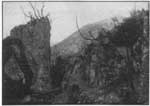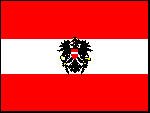|
|
 Three Days on the Isonzo Three Days on the Isonzo
By Dr. Julius Pölzer
Translation and Annotations by T.W. GROGAN
©1982 by T.W. Grogan
The following account of the late Dr. Julius Pölzer came by chance into the hands of my friend, Sepp Loicht, who served in the Austrian Kaiserschützen Regiment Nr. 2 during the First World War, and has been translated and published here with his kind permission. It should be noted that this account originally was written in January 1916 and is, therefore, full of the emotions of the time. Hopefully, no one will take offense at its frankness.
The conduct of the war on the Dnjester (1) had already become entirely "gemütlich." My God--trench warfare with 1000 paces (29) separating frontlines in a region where one doesn't find a single grain of sand even after having dug three meters deep. On the edges of magnificent Oak and Beech forests, we constructed earth fortifications in the impenetrable humus which were formal marvels, and laid out wire entanglements again and again and still always further in order to get rid of the large quantity of barbed wire, which they always sent to us from the Divisionskommando. Artillerie, we had in substantial quantity behind us--no wonder therefore if we already felt ourselves entirely safe and secure in our earth shelters. We worked diligently on the further extension of our positions. Thus, resulted accommodations, which were decidedly more habitable than the railway station barracks in Graz.
Quite suddenly we (2) and the rest of the 6th Infanterie Division (3) became detached and were sent after a couple days rest on a frantic journey to the South. (4) Below us the war, which we had nearly forgotten about out by the Russians, necessarily had to be again brought entirely into remembrance. I want to try to express in a few words the three last days which I experienced "below" (5) and to convey the hideousness as greatly as possible.

Austro-Hungarian artillery in action on the "Southwestern Front." (Imperial War Museum photo Q60411)
Our position, which we had taken over around midnight (6) under torrential weather, began at the intersection of our Front with the Isonzo River, easily 500 paces from the lower end of the mouth of the Wippach (7), and rested its right flank on the stretch of railway line between the Isonzo and the foot of the Karst Plateau. (8) From there, it extended itself in a very angular and irregular line across the edge of the plateau. For the most part the railway track rested upon the mountain, although it was bisected at many points by its own spurs. It ran at last onto an embankment since the mountain receded somewhat at this point forming several channels for water run-off. At the foot of the embankment were inserted two long and tall water passages in the form of well-built tunnels, (24) which formed, along with the great height and low angle of slope, the permanent section of the railway, a fairly long and absolutely secure protection for, at any time, a Kompagnie and the Baruskommando. Our position began there, where the railway left the incision and tread out onto the embankment. From here our defensive line stretched our across the mountain. This battle position may have originally been totally fine. In any case, it wasn't worse than any of the other many defensive lines which stretched themselves one behind the other deep towards the Krain. (9) I myself thought that our "Herrn Offiziere" hadn't reckoned with the Italian artillerie, when they created this layout. (10) I can, and of course desire to, say nothing against the development of the same, however notwithstanding its completion, was decidedly not all too suitable. How should boards and roofing felt withstand week long bombardments? The most advanced line may have been the best. But it has unfortunately been abandoned to the Welschen (11) by the "brave and heroic" Honvedtruppen (12) how so if each piece of ground that enemy took from us down there, had "unsurpassable" Honved as defenders.
|
|





